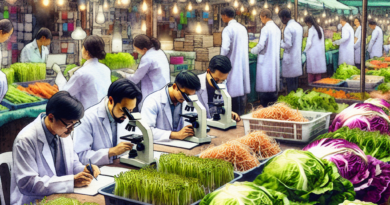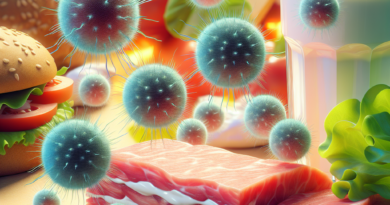Enhancing Pathogen Detection: A Novel Electrochemical Biosensor for E. coli in Traditional Medicine
Introduction to Rapid Pathogen Detection
Ensuring the safety of food and traditional medicines is a critical public health issue. Pathogenic Escherichia coli (E. coli), notorious for causing severe foodborne illnesses, demands swift and accurate detection methods to prevent outbreaks and ensure consumer safety. Traditional detection methods, while reliable, are often time-consuming and labor-intensive, creating an urgent need for innovative technologies that can provide rapid and sensitive detection.
The Quest for a Better Detection Method
Current E. coli detection strategies range from culture counting to molecular and immunological methods, each with its own set of limitations, such as long processing times, high costs, and complex procedures. Electrochemical methods have emerged as a promising alternative, offering high sensitivity and simplicity at a lower cost. This blog delves into groundbreaking research that has led to the development of an aptamer-based electrochemical biosensor, a tool that could significantly enhance our ability to detect E. coli quickly and effectively.
The Science Behind the Electrochemical Biosensor
The biosensor employs a thiolated capture probe immobilized on a gold electrode, which then hybridizes with a biotinylated aptamer probe specific to E. coli. When E. coli is present, it binds to the aptamer, displacing it from the capture probe. The remaining aptamer allows for the attachment of streptavidin-alkaline phosphatase, which catalyzes a substrate to produce an electrochemical signal detectable by differential pulse voltammetry.
Advantages of the Aptamer-Based Approach
Aptamers, single-stranded oligonucleotides, offer several benefits over traditional antibodies used in biosensors, including easy preparation, low cost, high stability, and strong affinity for their targets. This makes them ideal for use in electrochemical biosensors designed for pathogen detection.
Performance of the Electrochemical Biosensor
With a detection limit as low as 80 CFU/mL and a linear response range from 5.0 × 102 to 5.0 × 107 CFU/mL, the biosensor exhibits excellent sensitivity and reproducibility. It also offers a significantly reduced detection time compared to traditional methods, making it a highly efficient tool for practical applications.
Real-World Application and Results
When applied to licorice extract samples, the biosensor’s results closely matched those of the traditional culture counting method, but with a fraction of the time requirement. This demonstrates its potential as a rapid microbial examination tool in the field of traditional Chinese medicine and beyond.
Conclusion and Future Perspectives
The study presents a promising leap forward in pathogen detection technology. The aptamer-based electrochemical biosensor stands out for its low detection limit, quick results, and potential applications in food and drug safety, quality control, clinical diagnostics, and environmental monitoring.
References
Wang, H., Zhao, Y., Bie, S., Suo, T., Jia, G., Liu, B., Ye, R., & Li, Z. (2019). Development of an Electrochemical Biosensor for Rapid and Effective Detection of Pathogenic Escherichia coli in Licorice Extract. Applied Sciences, 9(2), 295. http://dx.doi.org/10.3390/app9020295




